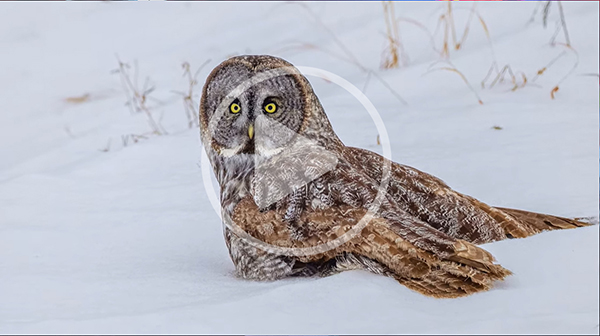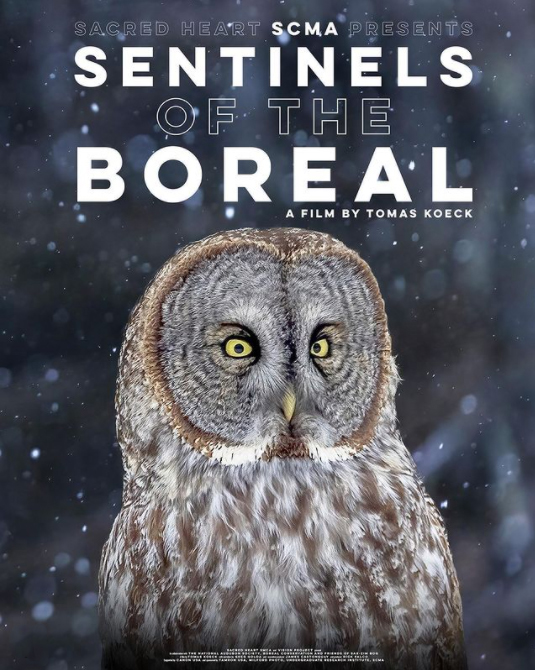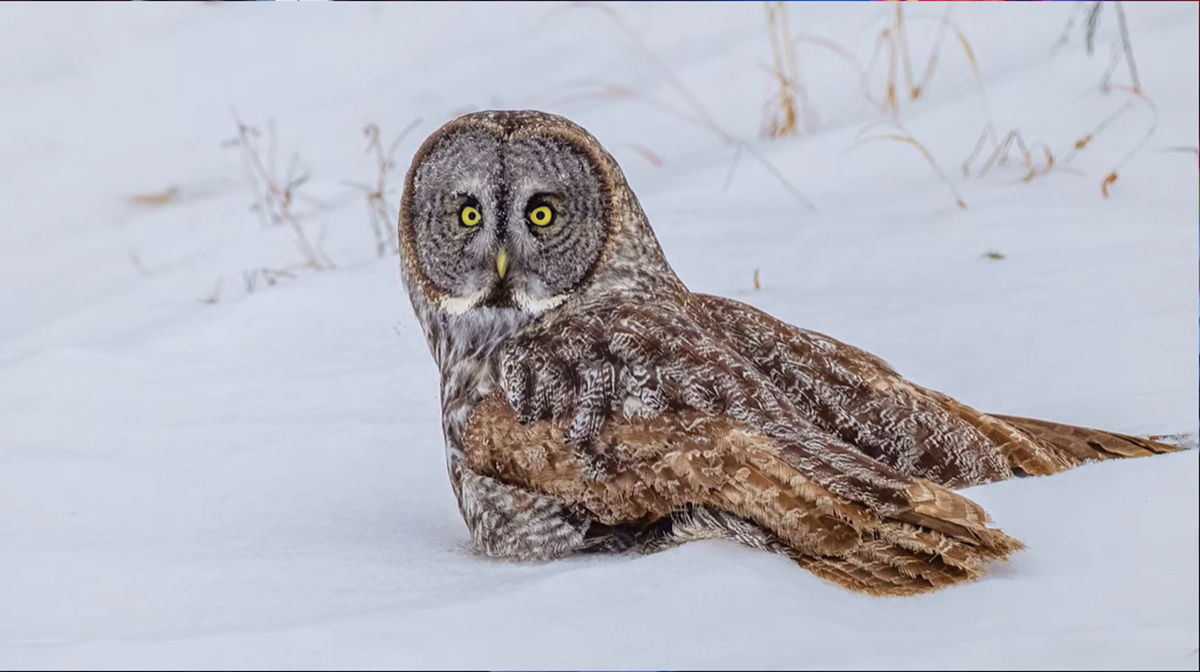In Search of Owls
Sacred Heart senior Tomas Koeck shoots a documentary film on North America’s boreal forest with his Tamron SP 15-30mm VC G2 and SP 150-600mm VC G2 lenses.
More Photo Tips | Video Gallery | Photo Gallery | Enewsletter sign-up
By Jenn Gidman
Documentary by Tomas Koeck

Watch Tomas' video
When Tomas Koeck started his higher-education journey, he was a biology major at Penn State. Then, in 2017, he picked up a DSLR and started taking pictures, and his life path shifted. Today he’s a senior at Sacred Heart University, studying digital media and merging his love of photography with his concern for the environment, sitting on the board of directors for the Connecticut Audubon Society, serving as an ambassador for Amazon Prime’s “The College Tour” mentorship program, and working on projects for the PBS Nature series and the Smithsonian Channel.
While immersed in his studies at Sacred Heart, Tomas one day came up with the idea to put together a short film on great gray owls, an animal that has always fascinated him. “I went to one of my professors, said I wanted to get it done, and staff in the university’s multimedia journalism department helped me refine my vision—I decided to incorporate the concepts of climate change and carbon storage, for instance,” he says. “They also helped me find funding to make the film happen. There hadn’t been anything like this done before at the university.”
The fruits of his labor: Sentinels of the Boreal, a 10-minute documentary focusing on the North American boreal forest—the largest intact forest on Earth, stretching across 1.2 billion acres from Maine to Alaska—and its resident wildlife, especially the native great gray owl, the largest owl on the continent. Tomas had to embark on several different trips to capture footage for the film, including to New Hampshire to film loons; to Maine to interview biologists and to obtain drone footage; and to Minnesota for a week in January to see if he could capture footage of the great gray owl at the Saz-Zim Bog (the challenges of his Minnesota trip are documented further here).
“That trip was definitely a gamble because great gray owls are one of the most elusive birds on the planet,” Tomas says. “We would be up at 3 or 4 a.m. each day and keep going until it got dark in the evening. To my delight, after about two or three days, we did spot our first great gray owl, and I was in awe, my jaw to the floor. It’s a majestic, tall owl, a completely stunning creature. I’d been worried we wouldn’t see any—and we saw more than just this one—and had started brainstorming what I would do for my film if I wasn’t able to capture any footage. Turns out I didn’t have to worry.”
To capture photos and video footage for Sentinels of the Boreal, Tomas used the Tamron SP 15-30mm F/2.8 VC G2 wide-angle lens, as well as the SP 150-600mm VC G2 ultra-telephoto lens. “The 15-30 is always in my bag,” he says. “No matter what assignment I'm doing, I can use it for so many different purposes. For this project, I mainly used it while conducting some of my expert interviews, as well as for landscape shots and, thanks to its close focusing abilities, for subjects that were very close to my camera.”
Also coming into play for Tomas: the 150-600, which offered him the reach he needed so he could remain nonintrusive when filming wildlife. “For me, wildlife ethics is number one,” he says. “Being on the board of my local Audubon Society, it would be hypocritical if I were unethical with my photography and cinematography. Having a lens that's able to zoom in and knock it out while staying far enough away from my subjects is for the best of the animals, and for the viewers watching.”
Plus, thanks to their weather sealing and other protections, both of his Tamron lenses were ideal for the job Tomas had to accomplish in the extremely cold, windy Minnesota environment. “I felt very confident in my gear while I was shooting,” he says. “We had some negative 20-degree days, and for some of the interviews, we would be out there for 30 to 40 minutes. My lenses held up really well under that kind of pressure.”
After Tomas gathered all of the footage he needed, he headed back to Sacred Heart, where he would sit in front of his computer for hours at a time during the editing process—a process some directors or cinematographers find grueling, but which Tomas thoroughly enjoyed. “This was the part where I had to pull all of the footage together, see what music worked with what, what pacing worked, where the sound best fit to make the film glide in the smoothest manner,” he says. “I then sent a first draft to my professors, but I’d spent so much time perfecting it that they didn’t have that many edits.”
At press time, Tomas was preparing for his next adventure: photographing great white sharks in Mexico, a collaboration with the nonprofit Atlantic Shark Institute. With him on that trip: the Tamron SP 70-200mm F/2.8 VC G2 and the SP 35mm F/1.4 Di USD, as well as his 15-30 in an underwater housing. “We’re doing a big film on different aquatic species, using the great white shark as sort of a figurehead species for the documentary, much like I used the great gray owl as the figurehead for Sentinels of the Boreal,” he says. “By the time we’re done compiling all of our footage in Mexico and elsewhere, I hope to also have photos and footage of humpback whales, gray and harbor seals, Maine lobster, and a variety of reef fish. I’m really excited about this project, and using my Tamron lenses to complete it.”
To see more of Tomas Koeck’s work, check out his website or his Instagram. Watch Sentinels of the Boreal here, as well as a behind-the-scenes video on the making of his short film.

More Photo Tips | Watch Videos | Learn More About Tamron Lenses | Photo Gallery
